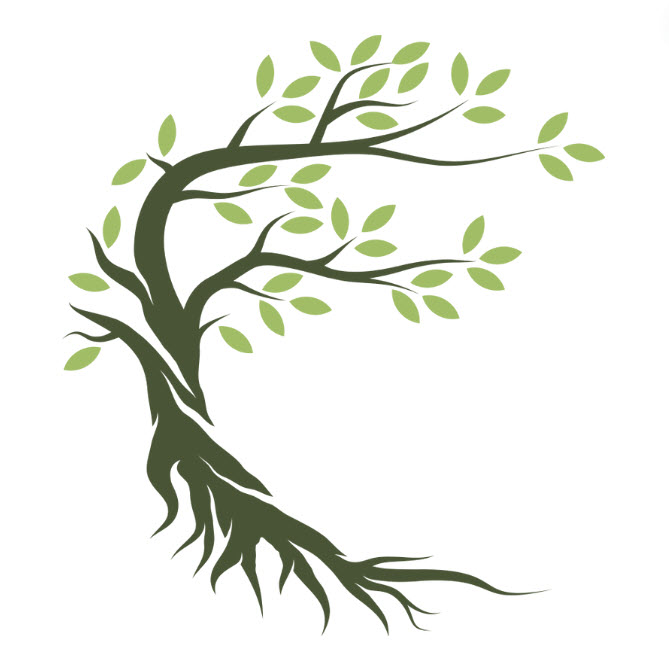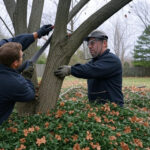Different Types of Tree Services
Tree care is vital to maintaining the health and safety of the trees in our environment. Tree services cover a broad spectrum of tasks, ranging from routine maintenance to emergency care. Professional arborists and tree specialists offer a variety of services to ensure that trees are well-maintained, safe, and aesthetically pleasing. In this guide, we delve into the different types of tree services and their importance.
Pruning and Trimming
Pruning and trimming are essential tree maintenance tasks that help improve the health, structure, and appearance of trees. Pruning involves removing dead, diseased, or damaged branches to prevent the spread of disease and promote healthy growth. It is also used to enhance the tree’s structural integrity by eliminating weak branches that might break during storms.
Trimming, in contrast, focuses on maintaining a tree’s shape and controlling overgrowth. It is often done for aesthetic purposes and is particularly important for ornamental trees and shrubs. Regular trimming can also help improve the airflow and sunlight penetration around the tree, ensuring better overall health.
Tree Removal
When a tree becomes a safety risk, is severely diseased, or has died, tree removal becomes necessary. This service involves cutting down the tree and safely removing it from the property. Tree removal may also be required if a tree’s roots are damaging structures such as buildings, sidewalks, or driveways.
Removing large trees is dangerous work that should always be handled by professionals with the proper equipment and experience. Arborists assess the tree’s condition and surrounding environment to determine the safest and most efficient method of removal, ensuring no damage to nearby structures.
Stump Removal and Grinding
After a tree is removed, the stump left behind can become a problem. It can be unsightly, a tripping hazard, or even a breeding ground for pests. Stump removal and grinding are services designed to eliminate stumps from the landscape. Stump grinding involves using a machine to grind the stump down to ground level, leaving behind wood chips that can be used for mulch.
Full stump removal, which includes extracting the roots, is more labor-intensive and is recommended when the roots pose a threat to underground utilities or structures. Both processes enhance the look of the yard and prevent potential problems from decaying stumps.
Tree Planting and Transplanting
Tree planting services ensure that new trees are properly placed and cared for from the start. Selecting the right tree for a specific location requires knowledge of the species, soil conditions, and environmental factors. Professional arborists help with planning, planting, and offering guidance on long-term care to ensure the new tree thrives.
Transplanting involves moving an existing tree to a new location. This is often done to preserve trees during construction or landscape redesigns. The transplanting process is delicate and requires careful preparation to avoid damage to the tree’s roots and minimize transplant shock.
Emergency Tree Services
Trees are susceptible to damage from severe weather conditions, such as high winds, lightning, or heavy snowfall. Emergency tree services are available to quickly address fallen trees, broken branches, or other storm-related tree hazards. When a tree falls on a structure, power line, or blocks a road, quick removal is necessary to prevent further damage or injury.
Emergency services include removing damaged trees and assessing whether others need to be pruned or reinforced to avoid future risks. Professionals are equipped with the right tools and experience to handle dangerous situations safely.
Tree Health Care and Treatment
Tree health care services focus on the diagnosis, treatment, and prevention of diseases that affect tree vitality. Arborists assess trees for signs of infection, pest infestations, or nutrient deficiencies and create a treatment plan. Preventative care is critical to avoiding large-scale problems, such as widespread disease or decay.
Common treatments include pest control, applying fungicides, fertilization, and soil management. Routine tree health assessments can catch issues early, allowing for timely interventions that save trees from significant damage or death.
Cabling and Bracing
When trees have weak or heavy branches that are prone to breaking, cabling and bracing can help stabilize them. Cabling involves installing flexible steel cables between branches to provide support, while bracing involves placing rods within the tree to strengthen its structure.
These techniques are particularly useful for older trees or those with a sentimental or historical value. They help protect trees from structural failure, extend their lifespan, and prevent accidents due to falling branches.
Lot Clearing and Site Preparation
Lot clearing is a large-scale service often required for new construction projects, agricultural developments, or landscape redesigns. It involves the removal of trees, brush, and debris from the land to prepare the site for future use. Lot clearing must be done carefully to avoid unnecessary destruction and preserve valuable trees that add to the landscape’s value.
Professionals use specialized equipment to clear large areas quickly and efficiently while minimizing the environmental impact. Debris is properly disposed of or recycled, and care is taken to ensure compliance with local regulations.
Storm Damage Cleanup
After a storm, property owners are often left with downed trees, broken branches, and scattered debris. Storm damage cleanup services focus on removing fallen trees, pruning damaged branches, and restoring the landscape to its pre-storm condition. This service helps prevent further property damage and clears dangerous obstructions from roads, driveways, and walkways.
In some cases, storm-damaged trees may be salvaged with pruning and structural support, while others may need to be removed entirely to eliminate safety hazards.
Tree Fertilization and Soil Improvement
Healthy trees need proper nutrition to grow strong and resist diseases. Tree fertilization services ensure that trees receive the nutrients they need, especially in urban or suburban environments where natural soil fertility may be low. Arborists conduct soil tests to identify deficiencies and recommend the appropriate type and amount of fertilizer.
Soil improvement techniques, such as aeration, can help alleviate compaction and promote better root development. This improves water absorption, nutrient uptake, and overall tree health, leading to stronger, more resilient trees.
Arborist Consulting and Tree Risk Assessment
An arborist consultation involves a professional assessment of a tree’s health, structure, and safety risks. Arborists offer guidance on the best practices for tree care, disease management, and hazard prevention. This service is often sought by homeowners, property managers, or municipalities to make informed decisions regarding tree maintenance, removal, or planting.
Tree risk assessments are also crucial for identifying potential dangers, such as trees that are at risk of falling or causing damage. Arborists provide recommendations for reducing risks, including pruning, cabling, or removing hazardous trees.
Root Management
Root problems can arise when tree roots grow too close to buildings, driveways, or underground utilities. Root management services help control and redirect root growth without harming the tree. Root pruning may be necessary to prevent damage to structures while maintaining the tree’s stability.
Soil compaction is another common issue that affects root health. Aeration can help loosen compacted soil, allowing water and nutrients to reach the roots more easily. Proper root care ensures a healthy foundation for the tree and prevents long-term damage.
Pest and Disease Control
Pests and diseases can wreak havoc on trees if left untreated. Pest control services address common threats like insects, mites, and fungi that attack trees. Arborists use environmentally safe treatments, such as insecticides or biological controls, to eliminate pests and prevent infestations from spreading.
Early detection is key to effective pest management. Regular inspections and treatment programs can protect trees from serious damage and preserve their health and longevity.
Tree Preservation During Construction
During construction or landscaping projects, trees can be damaged by heavy machinery, soil disturbance, or improper pruning. Tree preservation services help protect trees from the negative impacts of construction work. Arborists assess which trees should be saved and implement protective measures such as fencing, root pruning, and proper mulching to minimize damage.
Tree preservation ensures that valuable trees remain intact, adding long-term value to the property and enhancing the surrounding environment.
Hazardous Tree Assessment
A hazardous tree assessment identifies trees that pose a danger to people, buildings, or utilities. Arborists evaluate factors such as decay, weak limbs, and root instability to determine the risk level. Based on the assessment, they provide recommendations for reducing hazards, such as pruning, bracing, or removal.
This service is particularly important for trees located in high-traffic areas, near homes, or in regions prone to extreme weather. Regular assessments can help prevent accidents and property damage by addressing tree hazards early.


